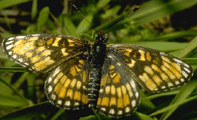Native Plants
Search for native plants by scientific name, common name or family. If you are not sure what you are looking for, try the Combination Search or our Recommended Species lists.
Stenandrium barbatum
Stenandrium barbatum Torr. & A. Gray
Early Shaggytuft, Shaggy Stenandrium
Acanthaceae (Acanthus Family)
Synonym(s): Gerardia barbata
USDA Symbol: STBA
USDA Native Status: L48 (N)
A dwarf, tufted, grayish plant with short spikes of rose-pink flowers nestled among leaves.
The bright rose-pink flowers of this species are conspicuous against the gray limestone; it is one of the first wildflowers to bloom in the normally dry spring of western Texas.
Plant Characteristics
Duration: PerennialHabit: Herb
Fruit Type: Capsule
Size Notes: Up to about 4 inches tall.
Bloom Information
Bloom Color: PinkBloom Time: Feb , Mar , Apr , May , Jun
Distribution
USA: NM , TXNative Distribution: Southern New Mexico and western Texas south to northern Mexico.
Native Habitat: Open, limestone flats and rocky or clay banks.
Butterflies and Moths of North America (BAMONA)
|
Definite Patch (Chlosyne definita)  Larval Host |
Bibliography
Bibref 1186 - Field Guide to Moths of Eastern North America (2005) Covell, C.V., Jr.Bibref 1185 - Field Guide to Western Butterflies (Peterson Field Guides) (1999) Opler, P.A. and A.B. Wright
Search More Titles in Bibliography
Web Reference
Webref 23 - Southwest Environmental Information Network (2009) SEINet - Arizona ChapterWebref 15 - The American Southwest (1994) John Crossley
Additional resources
USDA: Find Stenandrium barbatum in USDA PlantsFNA: Find Stenandrium barbatum in the Flora of North America (if available)
Google: Search Google for Stenandrium barbatum
Metadata
Record Modified: 2023-02-28Research By: TWC Staff